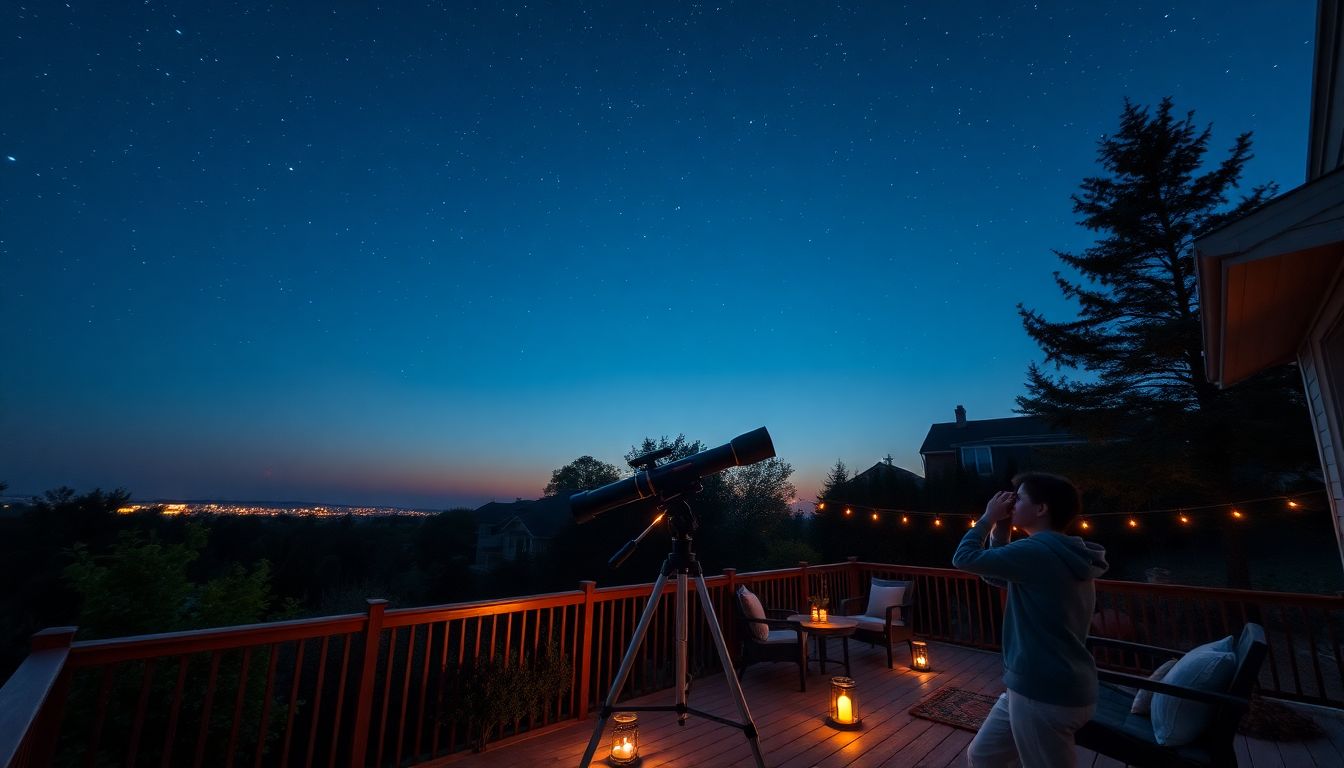
Top Tips for Watching Mars from Your Backyard: A Complete Guide to Stargazing Success
Introduction: Unlocking the Beauty of Mars in Your Backyard
Watching Mars from your own yard feels like peering into another world. As planetary oppositions become more common, it’s easier than ever to catch a glimpse of the Red Planet. Whether you’re a newbie or an experienced stargazer, knowing the right tips can turn a good view into a spectacular one. Preparing well means you’ll see more details, like polar ice caps and surface markings. In this guide, we’ll walk through everything you need to get the best out of your Mars viewing nights.
Choosing the Right Time to Observe Mars
Best planetary visibility periods
Mars isn’t always easy to see. It shines brightest during oppositions, which happen roughly every two years. During opposition, Mars is closest to Earth, making it appear larger and brighter. The next big Mars opposition occurs in December 2024. Keep an eye on astronomical calendars to know when Mars will be at its best.
Ideal times for stargazing
The best time to observe Mars is right after sunset or just before dawn. Darkness helps reduce light pollution and enhances visibility. Moon phases matter too; a new moon means darker skies, perfect for spotting planets. Avoid nights when the moon is full or nearly full because the bright light washes out fainter details on Mars.
Weather conditions and atmospheric considerations
Clear, dry nights are your best bet for seeing Mars clearly. Clouds and humidity can block your view or cause shimmering effects. Windy nights stir the air, making the planet look fuzzy. Check the weather forecast and pick nights with stable, clear skies for ideal viewing.
Selecting Equipment for Backyard Mars Watching
Telescopes suitable for observing Mars
Choosing the right telescope makes all the difference. Refractors and reflectors work well, but a compound telescope combines the best of both. For detailed images, aim for an aperture of at least 6 inches. Larger lenses gather more light and reveal finer surface details like craters and polar ice.
Essential accessories
A high-quality eyepiece with 200x or higher magnification helps you see more surface features. Using filters like red or green can improve contrast and highlight specific details on Mars. Specialized planetary filters boost surface markings and reduce glare.
Smartphone and camera integration
Capturing Mars with your phone or camera is easier than ever. Use apps that help locate planets and apps that assist with stacking images for sharper photos. Mount your device securely and take multiple shots for best results.
Setting Up for Optimal Viewing
Location and site considerations
Find a dark spot away from streetlights, porch lamps, or any bright source. An open area with a clear view of the sky works best. Elevating your telescope a little off the ground can reduce atmospheric interference. Avoid obstructions like trees and buildings.
Proper telescope assembly and calibration
Set up your telescope in advance. Ensure the optical tube is aligned correctly and that it’s properly collimated—this helps avoid blurry images. Polar alignment is key for tracking Mars smoothly across the sky, especially if you plan to observe over several nights.
Light pollution reduction tips
Use light shields or covers to block stray lights from nearby sources. Schedule your viewing when ambient lights are minimal—late at night or early morning. Using filters designed for light pollution can also improve your view.
Techniques for Enhancing Mars Observation
Understanding Mars features
Getting familiar with Mars’ surface helps you identify features like the polar ice caps, large volcanoes, and dark markings. Use star charts or astronomy apps that show planetary features to guide your observations.
Best viewing practices
Let your eyes adjust to the dark for about 20 minutes. Use a steady mount or tripod if using small telescopes or binoculars. Practice tracking the planet’s movement by slowly adjusting your telescope’s position.
Taking notes and tracking changes
Keep a journal of what you see each night. Note surface details, storms, or seasonal changes. Watching Mars over months reveals how its surface evolves, making your stargazing more rewarding.
Additional Tips and Resources
Educational resources and communities
Join local astronomy clubs or online forums. Sharing tips and experiences enhances your skills. Websites with observation logs provide valuable reference points.
Staying updated with planetary events
Follow NASA, ESA, or other space agencies for news about upcoming planetary close-ups or missions. Use apps and websites that show real-time planetary positions. Staying informed helps you plan your best viewing nights.
Safety and best practices
Handle your equipment with care, especially high-power telescopes. Protect your eyes from direct sunlight when adjusting equipment during the day. Keep your gear clean and properly stored to last for many seasons.
Conclusion: Enhance Your Backyard Mars Viewing Experience
Watching Mars from your backyard can be an awe-inspiring experience. With the right timing, equipment, and techniques, you’ll unlock incredible details of the Red Planet. Keep tracking Mars over different nights and seasons for the most rewarding views. Stay curious, stay patient, and let your love of astronomy grow. The universe is waiting right outside your door!

